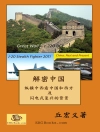This book, the first full account of Japan’s financial history and the Japanese gold standard in the pivotal years before World War II, provides a new perspective on the global political dynamics of the era by placing Japan, rather than Europe, at the center of the story. Focusing on the fall of liberalism in Japan in late 1931 and the global politics of money that were at the center of the crisis, Mark Metzler asks why successive Japanese governments from 1920 to 1931 carried out policies that deliberately induced deflation and depression. His search for answers stretches from Edo to London to the ragged borderlands of the Japanese empire and from the eighteenth century to the 1950s, integrating political and monetary analysis to shed light on the complex dynamics of money, empire, and global hegemony. His detailed and broad ranging account illuminates a range of issues including Japan’s involvement in the economic dynamics that shook interwar Europe, the character of U.S. isolationism, and the rise of fascism as an international phenomenon.
Cuprins
List of Illustrations
List of Tables
Preface
Acknowledgments
Notes on Terms
Part One: Global Money and Empire
Prologue: London, 1898
1. Japan and the British Gold Standard, ca. 1715–1885
2. Gold and Empire, 1885–1903
3. The Sinews of War, 1904–1914
4. The ‘Positive’ and ‘Negative’ Policies
5. ‘Divine Providence, ‘ 1914–1918
Part Two: Global Money and the Doctrine of Induced Depression
6. The Great Divide, 1918–1921
7. ‘The Contractionary Tide, ‘ 1921–1926
8. The Theory and Practice of Induced Depression
9. ‘The Two-Party Principle, ‘ 1927–1929
Part Three: The Crisis of Liberalism
10. The Liberal Triumph, 1929–1930
11. Opening the Door to a Hurricane, 1930–1931
12. Capitalist Recovery in One Country, 1932–1936
Epilogue: Money and Hegemony
Appendix: Reference Information
Notes
Bibliography
Index
Despre autor
Mark Metzler is Professor of History and Asian Studies at the University of Texas, Austin.












